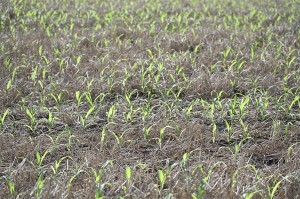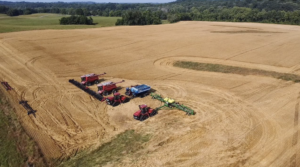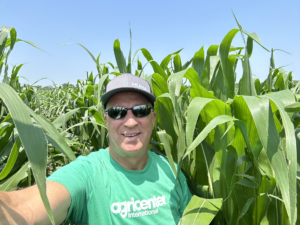Wheat harvest is well underway throughout the country. Each morning, the harvest process begins with equipment maintenance. Most farmers and custom cutters will park their fleet in a row, or in close proximity, so they can readily perform daily service. This involves the grease gun. Combines have hundreds of moving parts. Some of the most key bearings need to be greased daily, others weekly. You also want to check fluids, such as engine oil, inspect tires and belts, and clean windshields. Pickup fingers on the reel and sickle bar components on the header also need to be checked and frequently replaced. Morning is often when you refuel machines. Many farmers have portable fuel tanks to transport red diesel fuel to the field. Today’s largest combines can hold over 300 gallons of fuel.
Wheat isn’t just about making flour. These amber waves of grain produce another valuable by-product: straw. After wheat is threshed and separated by a combine, the stems are chopped and discharged out the back of the machine. Back in the day, straw was a big reason why many farmers (like my family) planted wheat, so they could bale the straw and use it for bedding livestock. For us, that was cattle and hogs. As a kid who spent his summers baling hay and straw, seeing straw bales was a welcome sight. For starters, they weigh about half as much as hay bales! They also aren’t as scratchy. Nowadays, most hay is produced in large round bales, yet much of the straw is still often packaged in small bales. And here’s a big misnomer: If you’ve ever been on a hayride or wienie roast, you likely sat on straw bales, not hay bales.
Wheat straw is also used by gardeners and by the building industry. But with fewer farms raising livestock, much of the time the straw remains in the field. In most cases, it’s more valuable left in the field. Why? Not only does it serve as mulch to protect the soil from erosion and suppress weeds, but straw also decomposes to return valuable nutrients to the soil, making it a valuable tool for #regenag practices. Wheat straw can recycle about 12 pounds of nitrogen, 3 pounds of phosphorus and 25 pounds of potassium per ton; and a typical wheat crop will produce over two tons of straw per acre. This can add up to about $40 per acre of value to the grower.
Last Wednesday marked the summer solstice, the longest day of the year in the northern hemisphere. From now until December, days will become shorter. This reduced photoperiod is Mother Nature’s way of triggering plants to produce more flowers. It creates a sense of urgency for them to reproduce.
Hail damage? What hail damage? What a difference a week makes! On June 16, my corn was hit by a hailstorm. One week later (see photos below), it continues to grow rapidly and looks very good at the V9 growth stage. While scouting the field, I observed virtually no damage to the top three leaves. The lower leaves show the effects of shotgunning and shredding, which is most prominent in leaf areas extending across the rows. But this damage may turn out to be mostly cosmetic. The corn was treated last week with 2 quarts of Vitol to help mitigate stress, along with Huma Gro Super Nitro (1 gal), Max Pak (8 oz), X-Tend (4 oz), Proud 3 (1 pt) and Crop Gard (1 qt).
Check out our new video that introduces the Huma brand. It’s now on our website at www.huma.us.
Related Posts

This Week in Ag #70
“We’re always only five days from a drought.” That’s the saying here in the Delta. And for good reason. These light soils are unforgiving, as they lack the water holding capacity of those in the Midwest. Case in point this season: after a very wet May in Memphis – where we received nearly seven inches

This Week in Ag #43
December 8th is #NationalChristmasTreeDay. This of course sets up the great debate, real or fake? While every family weighs the pros and cons of choosing the Tannenbaum they rock around, a popular nation is that fake trees are more eco-friendly. After all, they can keep for many years, right? And isn’t it bad to cut down real trees merely for decoration? Not so fast.






